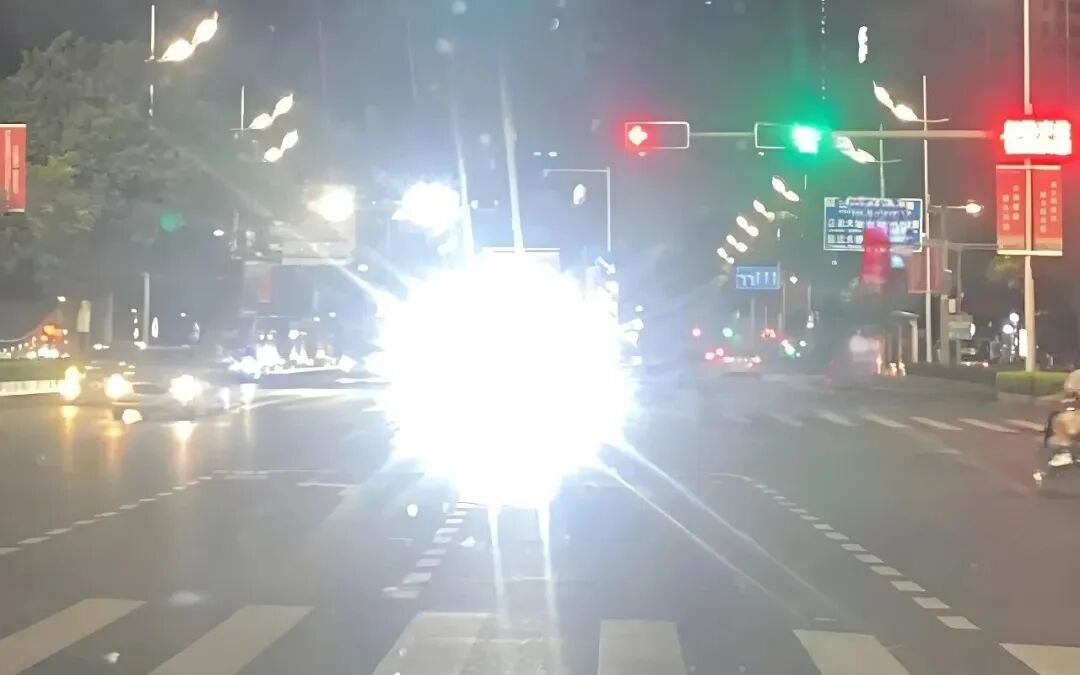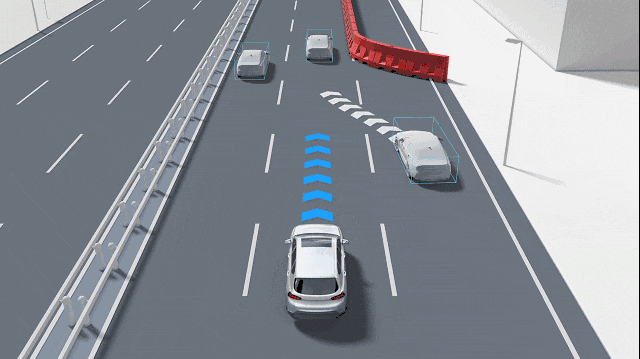Will the Evolution of Autonomous Driving Technology Alter the Landscape of Edge Scenarios?
![]() 09/25 2025
09/25 2025
![]() 439
439
Have you ever found yourself in extreme driving scenarios? Imagine not being able to discern traffic lights at an intersection on a foggy day, the car in front suddenly reversing, encountering disorganized signs in a construction zone, or an animal darting onto the road in the dead of night. For human drivers, these situations, though infrequent, can typically be managed with experience. Yet, for autonomous driving systems, such scenarios can be akin to 'visitors from outer space,' momentarily leaving the system unsure of its next move. Within the industry, these rare, complex, and challenging situations are termed 'edge scenarios.' Some have inquired whether the definition of these 'edge scenarios' will evolve alongside the progression of autonomous driving technology.
What Exactly Are 'Edge Scenarios,' and Why Should They Matter to Us?
When we discuss 'edge scenarios,' envision them as unique segments on the road that, while seldom encountered, can pose significant hurdles for autonomous driving systems when they do arise. Scenarios involving traffic lights, pedestrians crossing the street, and well-marked lanes are aspects of the system that have been thoroughly trained and are well-acquainted with. In contrast, edge scenarios represent the small fraction in the long tail, potentially encompassing extreme weather conditions degrading sensor information, unfamiliar road objects, temporary construction altering road conditions, or even combinations of unconventional actions by multiple traffic participants. Their defining characteristic is not merely their 'rarity' but the superposition of multiple factors, causing perception, localization, prediction, planning, and other modules to malfunction. Due to their 'rarity + complexity,' edge scenarios are challenging to enumerate exhaustively and difficult to resolve completely with a single solution, making them critical pain points for the safety evaluation and practical deployment of autonomous driving.

Once we acknowledge this, it becomes clear why edge scenarios receive heightened attention in numerous technological contexts. In reality, when an autonomous driving system operates in the real world, it does not face a set of standardized test questions but rather a diverse array of 'live' situations. To expand autonomous driving to a broader range of cities and roads, it is essential not only to handle common scenarios but also to ensure safe degradation or predictable responses when encountering unforeseen problems. This poses stringent challenges across multiple dimensions, including technology, product design, operations, and regulatory coordination.
What Do Edge Scenarios Look Like in Practice?
Many edge scenarios initially appear to be 'environmental issues,' but a deeper analysis reveals that they often involve the coordination of multiple aspects, such as perception, localization, prediction, and vehicle control. Starting with perception, weather conditions like rain, snow, and fog can blur, reflect, or create intense glare in camera images. Lidar can also be scattered by noise in heavy fog or raindrops, while millimeter-wave radar has limited recognition capabilities for small plastic objects. Some situations are not purely weather-related, such as mirror reflections caused by oil stains or standing water on the road, or irregular objects (flattened traffic cones, scattered cargo), all of which can lead to errors in target detection or segmentation. The uncertainty in perception is then passed on to subsequent modules, amplifying risks.

Problems at the localization and mapping level are equally daunting. High-definition maps provide rich semantic information, but if temporary road closures, construction, or renovations not covered by the latest map update occur, map-dependent localization and trajectory decisions may deviate from reality. Tunnels, urban canyons, or densely packed high-rise areas can block GNSS signals, inertial navigation can drift over time, and minor time deviations between sensors can place the vehicle in the wrong lane. For steering interaction and prediction, complex human-vehicle interactions can create another type of edge scenario, such as when multiple drivers or cyclists simultaneously make evasive or conflicting maneuvers. The autonomous driving system must assess multiple possibilities in a very short time and choose actions that are both safe and not overly rigid, which is precisely the most challenging aspect. Finally, there are edge scenarios at the system engineering level, such as decision delays caused by insufficient computing power, software regression issues, or temporary failure of a sensor. These cannot be resolved by a single module but require redundancy design and runtime monitoring to mitigate.
For autonomous vehicles, the truly perilous scenarios are often composite ones involving the superposition of several conditions. For example, on a rainy day, temporary traffic signs in a construction zone may be partially obscured, the road may have standing water, pedestrians may not cross the road according to norms, and the positioning signal may be blocked by an elevated bridge. While the system might handle any one of these issues individually, when multiple anomalies occur simultaneously, the entire chain may collapse. Understanding this 'superposition effect' is a crucial starting point for mitigating long-tail risks.
How Can We Effectively Manage These Edge Scenarios?
Faced with an endless array of edge scenarios, a system capable of continuous learning and safe degradation should be adopted rather than attempting to account for every possible anomaly in the rules. In essence, the autonomous driving system should learn to express uncertainty. When perception or localization provides a very low confidence level for an object, subsequent prediction and decision-making modules should automatically slow down, increase the safety distance, or trigger more conservative strategies. This way, even if recognition is inaccurate, risks can be kept within a controllable range. Another approach is multimodality and redundancy. Cameras, lidar, millimeter-wave radar, and inertial navigation each have their strengths and weaknesses. Effectively fusing them allows other sensors to fill in information gaps when one type of sensor fails, thereby enhancing robustness.

Data and simulation are playing an increasingly pivotal role in addressing edge scenarios. By transmitting suspected edge events encountered during actual vehicle operation back to the system and reconstructing them in simulation, these extreme combinations can be repeatedly run in a large-scale parameter space to identify model weaknesses and targetedly supplement data or adjust strategies. Active learning and edge mining can prioritize the annotation of the 'most valuable' small amount of data, making it more efficient than blindly collecting massive amounts of data. Meanwhile, deployment strategies are also crucial. Shadow mode allows new models to run in the background, recording but not affecting actual decisions, thereby evaluating performance. Phased rollouts and grayscale releases can limit potential problems to a small scope and avoid widespread risks through quick rollbacks.
Additionally, runtime monitoring and online response for autonomous vehicles are indispensable. The fleet should continuously monitor indicators such as sensor health, model confidence, and decision delay, automatically triggering data transmission and manual review. When encountering edges that cannot be resolved online, the system should have clear and understandable fallback options, allowing the vehicle to safely stop or transfer control to a remote operator or human driver. For unmanned operation scenarios, remote intervention and automatic safe stopping mechanisms become particularly important. It is also essential to shift the verification method from traditional mileage-based verification to a greater focus on scenario coverage and risk indicators. The autonomous driving industry is moving towards proving system safety through scenario-based testing, statistical risk measurement, and simulation coverage, which better measures long-tail risks.
How Will the Future Unfold, and How Should We Prepare?
As perception algorithms, sensor hardware, simulation capabilities, and fleet learning mechanisms continue to advance, many scenarios considered 'edge' today will gradually become routine for the system. Nighttime low-light conditions, partial rain or snow, and complex intersections, which were once challenging, are now being gradually addressed by new-generation multimodal models, night vision cameras, and denser data collection. However, as operations expand to different countries and road types, new long-tail issues will arise, such as animal intrusions on rural roads, traffic behaviors influenced by different cultures, or issues with proprietary infrastructure, which will continuously emerge. Therefore, 'edge' scenarios are not a phenomenon that will disappear but rather one that will migrate alongside system capabilities and deployment contexts.
Faced with such dynamics, the most feasible strategy is to build a sustainable capability loop, continuously collecting and feeding edge events back into the training and simulation system, continuously using simulation to verify the robustness of new models against long-tail combinations, and continuously monitoring runtime performance while employing conservative fallback strategies to ensure passenger safety. If industry-wide common standards and data can be shared, it will also amplify the effect of reducing long-tail risks. If accident playback and scenario data exchange can be achieved to a certain extent while protecting privacy and commercial interests, the 'learning speed' of the entire autonomous driving ecosystem will be much faster.
For ordinary users, the development of autonomous driving technology will make autonomous vehicles increasingly adept at handling common and known complex situations but more cautious in extreme or unseen combinations. This caution is not a sign of insufficient system capability but rather a sign of maturity. Prioritizing safety over blindly taking risks in uncertain situations is the ultimate goal of autonomous driving technology development.
Final Thoughts
Edge scenarios are both technical and systemic issues, testing not only perception algorithms and model training but also system architecture, operational capabilities, and regulatory coordination. Treating edge scenarios as engineering problems that can be discovered, simulated, and mitigated, and using continuous learning and scenario-based verification to shorten their impact on system safety, is the practical path to advancing autonomous driving from test sites to thousands of households. The road ahead is still long, but step by step, transforming each long-tail issue into a manageable risk is the process of turning uncertainty into reliability.
-- END --







